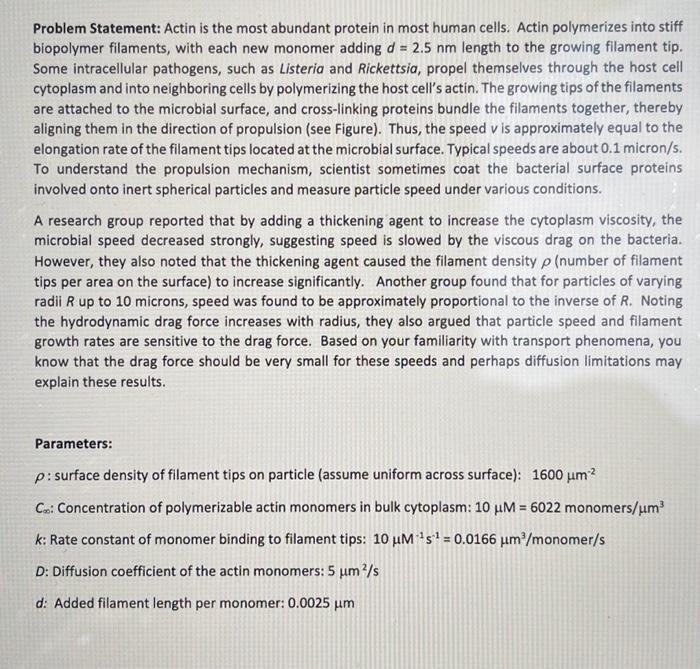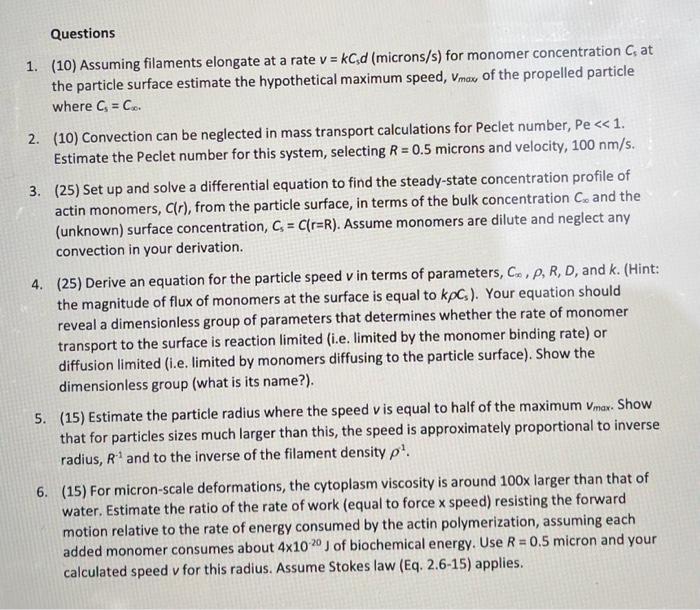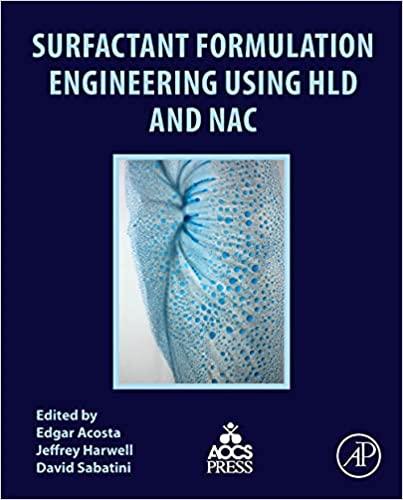Problem Statement: Actin is the most abundant protein in most human cells. Actin polymerizes into stiff biopolymer filaments, with each new monomer adding d=2.5nm length to the growing filament tip. Some intracellular pathogens, such as Listeria and Rickettsia, propel themselves through the host cell cytoplasm and into neighboring cells by polymerizing the host cell's actin. The growing tips of the filaments are attached to the microbial surface, and cross-linking proteins bundle the filaments together, thereby aligning them in the direction of propulsion (see Figure). Thus, the speed v is approximately equal to the elongation rate of the filament tips located at the microbial surface. Typical speeds are about 0.1micron/s. To understand the propulsion mechanism, scientist sometimes coat the bacterial surface proteins involved onto inert spherical particles and measure particle speed under various conditions. A research group reported that by adding a thickening agent to increase the cytoplasm viscosity, the microbial speed decreased strongly, suggesting speed is slowed by the viscous drag on the bacteria. However, they also noted that the thickening agent caused the filament density (number of filament tips per area on the surface) to increase significantly. Another group found that for particles of varying radii R up to 10 microns, speed was found to be approximately proportional to the inverse of R. Noting the hydrodynamic drag force increases with radius, they also argued that particle speed and filament growth rates are sensitive to the drag force. Based on your familiarity with transport phenomena, you know that the drag force should be very small for these speeds and perhaps diffusion limitations may explain these results. Parameters: : surface density of filament tips on particle (assume uniform across surface): 1600m2 C: Concentration of polymerizable actin monomers in bulk cytoplasm: 10M=6022 monomers /m3 k : Rate constant of monomer binding to filament tips: 10M1s1=0.0166m3/monomer/s D: Diffusion coefficient of the actin monomers: 5m2/s d: Added filament length per monomer: 0.0025m 1. (10) Assuming filaments elongate at a rate v=kCsd (microns /s ) for monomer concentration Cs at the particle surface estimate the hypothetical maximum speed, vmax of the propelled particle where Cs=C. 2. (10) Convection can be neglected in mass transport calculations for Peclet number, Pe








